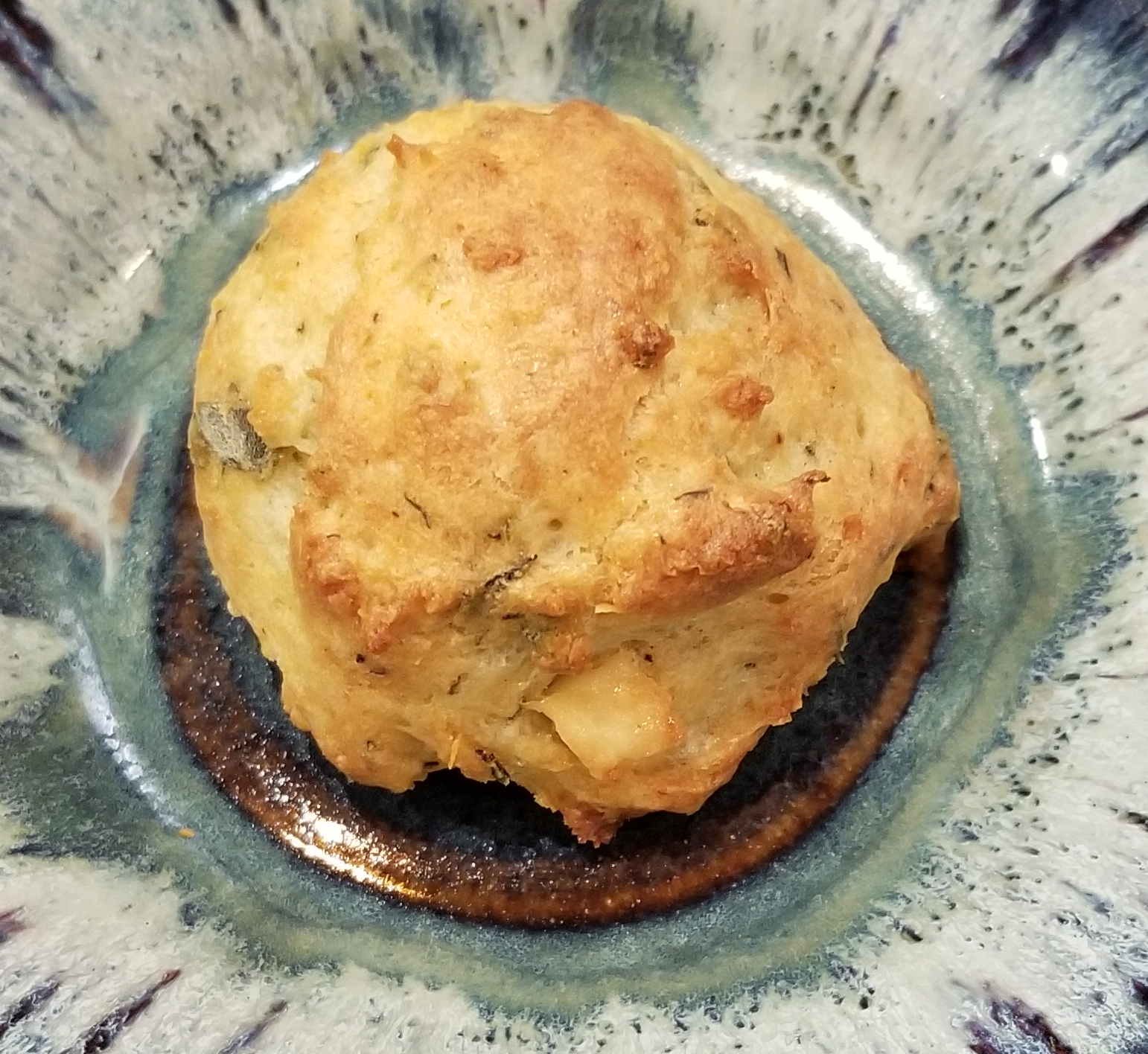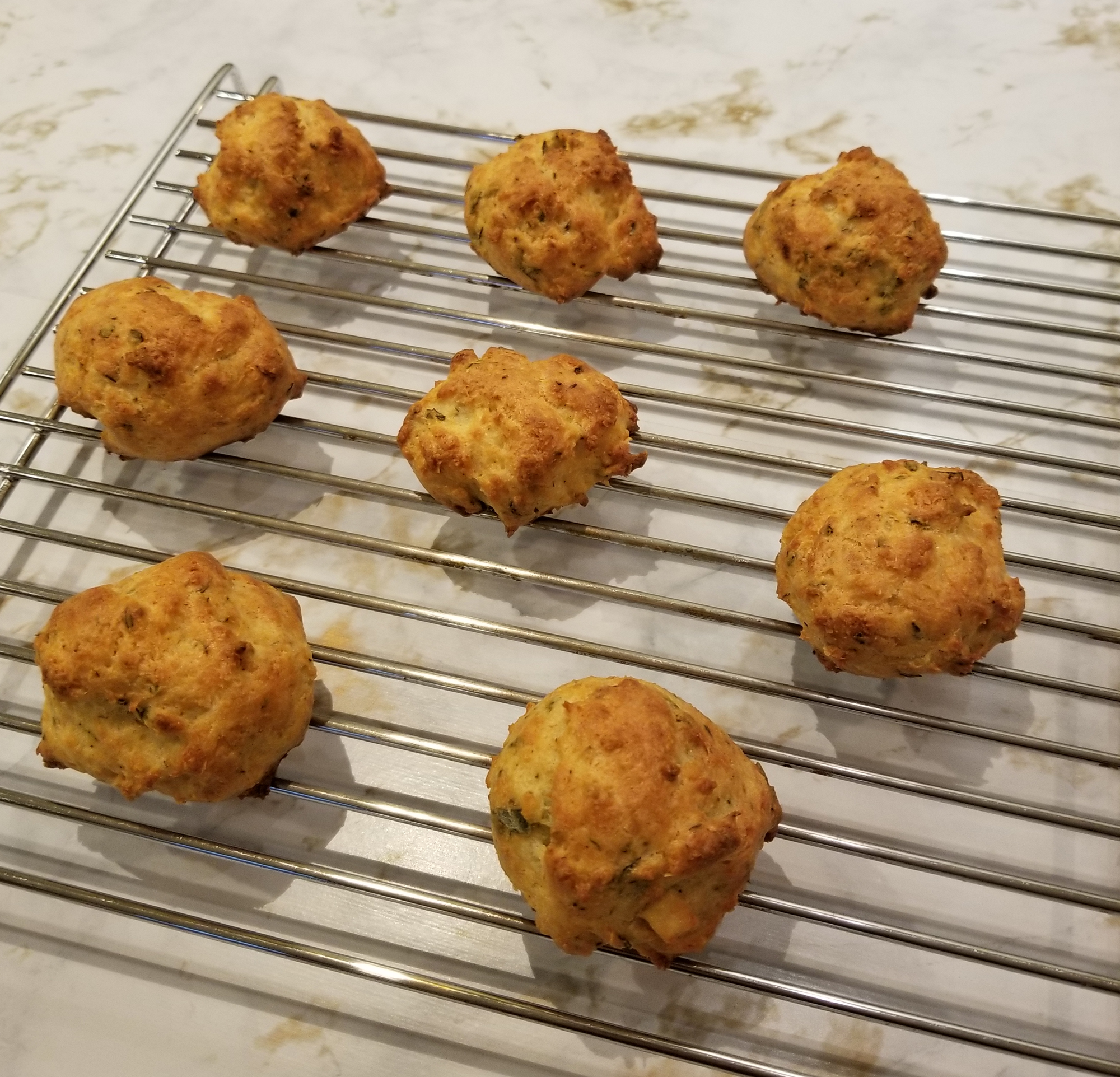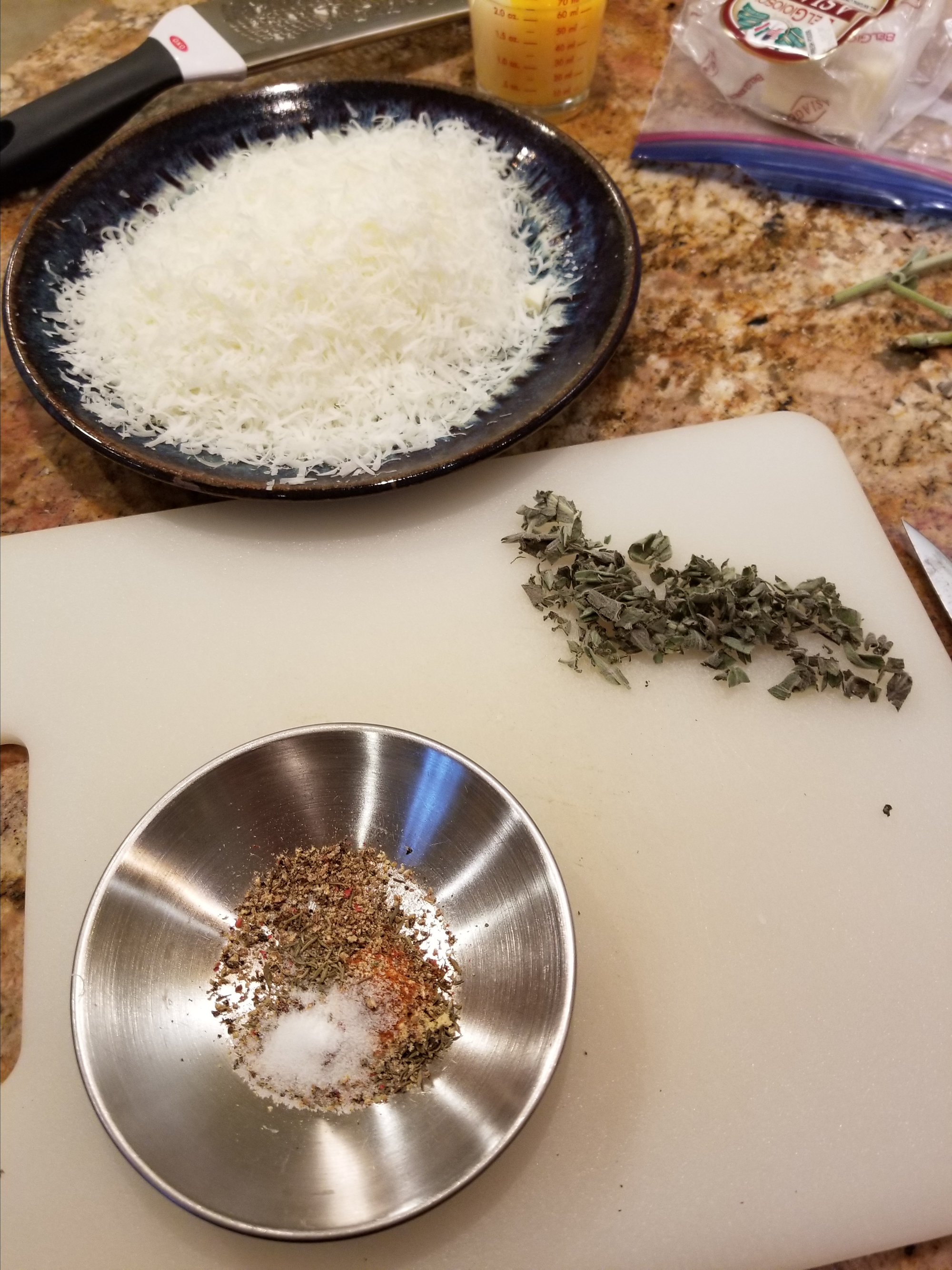The writer Mary Stewart once described a (fictional) dish as something that "would have tempted an anchorite to break his penance". Mary Stewart was one of a kind; I don't think most of us could get away with writing like that. When I first read that sentence, I had to look up "anchorite" in the dictionary. I was a college student subsisting mostly on tuna-noodle casserole. I had barely traveled beyond my home state, and certainly never outside the midwest. I read cookbooks on the weekends and made tentative forays into spaghetti carbonara and coc au vin rouge.

One of Mary Stewart's gifts was to relate the life of the senses in such compelling prose as to translate the reader to another time and place. She never did anything so mundane as describing the scenery. Her narrators talked about scents and textures, tastes, the feeling of the air. She could render a simple cup of coffee with such love I would have traveled to Geneva just to drink it.
These gougeres are exactly the sort of food I longed for, but had never tasted, in those days. It's too bad I didn't discover them sooner, and now I have to eat extra to make up for lost time. Rendered into English, a gougere might be called a "cheese puff". That doesn't sound very exotic, does it? (I am reminded of Food of the Sun, where the authors point out that when you translate bruschetta to "beans on toast", everyone loses interest.) A gougere requires no unusual ingredients, and the method is a classic choux pastry, familiar to anyone who has ever made a cream puff. But the results are intoxicating. During baking, the heavenly aroma of cheese fills the air. Once baked, the lovely crunchy texture and savory notes pull you in. Maybe you should have just one more.

I would argue that there is no wrong way to serve a gougere. I think they are best warm from the oven, but even the picky eaters at my house liked them cold as well. It seems that in parts of France, a cooled gougere is commonly served aside a late-afternoon glass of wine. This sounds lovely, although as the cook responsible for dinner, I tend to avoid late-afternoon glasses of wine...they so often presage an unscripted "see what you can find in the fridge" dinner menu. I first encountered the gougere in the pages of Teatime magazine where they were, obviously, suggested as a component of afternoon tea. They are indeed excellent in that venue, providing a welcome savory note in a meal that is often overloaded with sweets. They would also be delicious alongside a salad or soup at lunchtime. I'll have mine with a side of fine vintage writing: if the sun-drenched South of France sounds good these days, might I suggest Madam, Will You Talk?
Notes
This is a gluten-free recipe. If you do not want gluten-free gougeres, you can substitute all-purpose or bread flour for the gluten-free flour.
Choux pastry has a completely unwarranted reputation for being tricky. I've been making cream puffs and profiteroles since I was a teenager, and I've never had them fail. (I know, I know....tempting fate!) Nevertheless, the method of assembling them is unusual. If you've never made choux before, it's a good idea to read through the recipe once or twice, to get the sequence firmly in mind. It's also a good idea to assemble and measure out all the ingredients at the beginning: once you start cooking, things move along pretty briskly, and you won't have time to start rooting around in the pantry.

It's important to the final product that the cheese be finely grated, so that it incorporates well into the choux pastry. I found it best to grate the cheese by hand, using a fine grater. This results in a very fluffy pile of grated cheese, which can be tricky to measure accurately. That's why I suggest weighing the cheese before grating, rather than trying to measure the volume. An ounce of cheese turns into a surprisingly large mound of finely grated cheese.
In my various experiments to perfect the texture and flavor, I tried both Asiago and aged cheddar cheese. They were both delicious. I think almost any rather dry, crumbly, grate-able cheese would be nice. I would avoid soft cheese like brie and chevre, as I suspect their high moisture content will weigh down the gougeres and prevent them from puffing.
I thought these gougeres were pleasantly savory, but if you have a very delicate palate and don't like spicy foods at all, you might want to omit the cayenne pepper.
Inspiration
As noted above, I first saw gougeres in an issue of Teatime magazine. By the time I decided to make them, I couldn't remember which issue they appeared in and I couldn't locate the exact recipe. I did find a recipe on the Teatime website, and started with that. I did a lot of tinkering to make the recipe smaller and gluten-free, and to accommodate the kind of cheese I happened to have.
In the process of tinkering, I did a fair bit of online "research" into other recipes, some of it confusing. I saw a lot of contradictory advice about what kind of cheese to use for gougeres. The recipe I started with suggested Parmesan cheese. Other recipes state flatly that Parmesan should be avoided. Some recipes called for whole milk, others for water, or some combination of milk and water. Baking times and temperatures also varied by surprising amounts.
When different recipes have contradictory advice on the same topic, it often means it just doesn't matter: each author is recording what worked for them, and assuming that is the one right way. My own experiments suggested that gougeres made with water had a lighter texture than those made with milk (or a milk-and-water combo). I tried a few different cheeses that I had on hand, but nothing like vast array of cheeses available.
Most of the herbs and spices added were my own idea. If you substitute a different kind of cheese, you might want to vary the herbs to complement.

Comments powered by Talkyard.